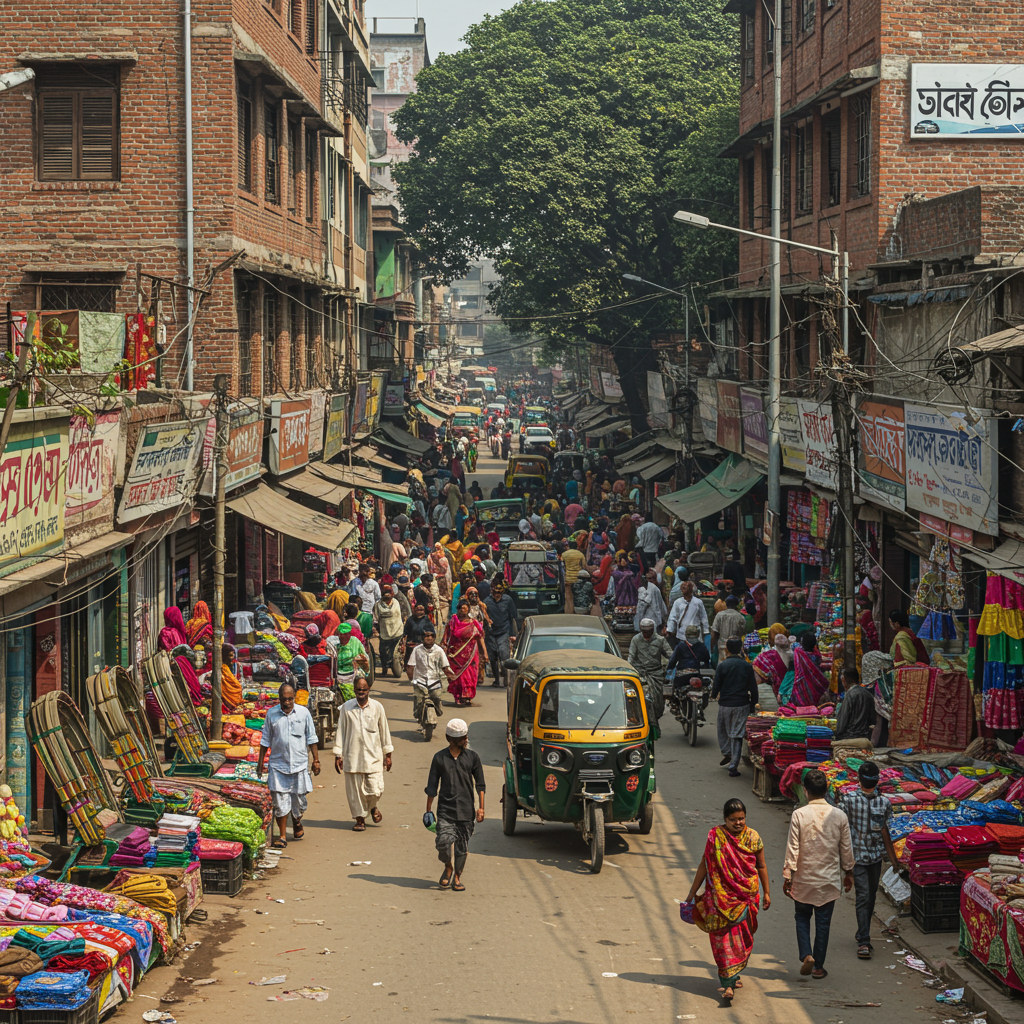Lifestyle in Bangladesh: Tradition, Work, and Modern Transformation
Bangladesh, a South Asian country, exhibits a lifestyle uniquely intertwined with nature, culture, economy, and history. From the bustling streets of Dhaka and Chittagong to the serene villages of the Ganges Delta, people’s daily lives blend hard work, family traditions, hospitality, and vibrant cultural festivals. Despite economic challenges and environmental changes, Bangladeshis have maintained their identity while engaging with the modern world.
In urban areas, life moves at a fast pace, with intense professional competition, whereas rural and peripheral regions follow a slower rhythm, centered on agriculture, fishing, and handicrafts. Family, community, and local connections play crucial roles in daily life. Culinary culture, religious practices, and traditional festivals preserve continuity between the past and present.
With the rise of technology, internet access, and social media, Bangladeshi youth have new opportunities for education, entrepreneurship, and social engagement. Women are increasingly active in the economy, education, and decision-making. This article explores urban and rural life, family structures, work, food, clothing, festivities, social transformations, and the future of lifestyle in Bangladesh, offering a comprehensive portrait of the country’s society and culture.
Urban Life
Urban centers, particularly Dhaka and Chittagong, serve as the main economic, educational, and cultural hubs of Bangladesh. Dhaka, with a population exceeding 20 million, is one of the world’s most crowded cities. Urban life is characterized by heavy traffic, bustling markets, modern commercial complexes, and crowded streets. Many residents work in textiles, IT, trade, and services. Urban living requires careful time management and adaptation to rapid social and economic changes.
Clothing in cities blends tradition and modernity. Women wear sarees and traditional outfits while also choosing Western attire; men often combine Western-style shirts and trousers with traditional clothing. Urban lifestyles are shaped by mobile phones, social media, online shopping, and modern entertainment. Urban residents have access to diverse street food and international restaurants, reflecting a growing culture of consumption and modern urban living.
Rural Life and Agriculture
Rural villages, especially in the Ganges Delta and coastal areas, offer a slower-paced lifestyle but involve intensive daily labor. Residents mainly work in agriculture, fishing, and handicrafts. Green paddy fields, wooden boats, and mud-and-bamboo houses symbolize this way of life. Weekly markets are spaces for trade, social interaction, and exposure to local culture.
Women play a vital role in the rural economy, participating in farming, weaving, and crafts. Children attend local schools and assist in family tasks. Religious ceremonies and traditional festivals, such as Bengali New Year and local celebrations, serve as social gathering points and help preserve cultural identity.
Family and Community
Extended families are highly valued in Bangladesh. Major decisions are made collectively, and respect for elders is a central aspect of social culture. In cities, families tend to be smaller, yet familial bonds remain strong. Community associations in villages help maintain social cohesion, mutual assistance, and the management of natural resources.
Food and Cuisine
Food is a crucial part of Bangladeshi lifestyle. Rice and fish form the staple diet. Local dishes like biryani, hilsa curry, pithas, and various lentils and vegetables are everyday meals. Meals are typically shared with family and friends, and culinary hospitality is an essential aspect of the culture.
Religion and Festivals
Religion actively shapes daily life. Religious festivals such as Eid al-Adha, Durga Puja, and Islamic holidays create social and cultural opportunities. Festivals like Pohela Boishakh turn streets into stages for music, dance, and colorful attire, reflecting the interplay between tradition and modern life.
Social Transformation and Technology
Mobile phones, internet, and social media have transformed lifestyles. Young people are increasingly focused on education, work migration, and entrepreneurship, while women play a more active role in the economy and education. Modern lifestyles are expanding in urban and semi-urban areas, blending with traditions to form a dynamic society.
Recreation and Leisure
Bangladeshis enjoy football, cricket, and volleyball for recreation. Visiting markets, exploring cultural sites, and ecotourism are popular leisure activities. In rural areas, local ceremonies, traditional music, and dance strengthen social cohesion and community ties.
Conclusion
The lifestyle of Bangladeshis blends economic diligence, rich culture, family orientation, and social cohesion. Urban life is fast-paced and modern, yet traditions and family values endure. Rural life remains close to nature, relying on agriculture and handicrafts. Technology, education, and women’s active participation have fostered positive changes. Despite challenges, society remains resilient, dynamic, and moving toward a sustainable, developed future.





No comment